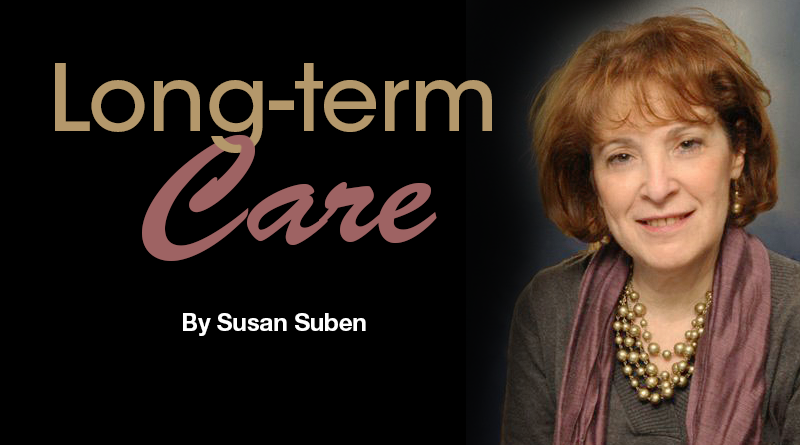Selecting the Best Medicare Plan
Several factors go into choosing the plan that best suits each individual
By Susan Suben
 Medicare is a complicated subject. There are many moving parts, enrollment periods and coverage gaps.
Medicare is a complicated subject. There are many moving parts, enrollment periods and coverage gaps.
With open enrollment that ends Dec. 7, it’s important to understand how Medicare pays for your health care. If you are turning 65, losing employer coverage or thinking of changing your Medicare Advantage plan, now is a good time to reacquaint yourself with Medicare features and benefits.
What is Medicare? It is health insurance for people 65 or older, for people under the age of 65 with certain disabilities or for people of any age who have end stage renal disease.
Medicare has four parts – A, B, C and D.
Part A covers inpatient hospital care, skilled nursing homes and hospice. Part B covers doctor visits, outpatient care, durable medical equipment and many preventive services. Parts A and B are generally called original Medicare (OM). Part C is known as Medicare Advantage (MA). It includes all the benefits and services of OM but the plans are run by private Medicare-approved insurance companies. Many of these plans offer prescription drug coverage and extra benefits and services not offered by OM, such as dental and vision. There are deductibles, co-pays and co-insurance costs to consider with OM and MA. Part D helps cover the cost of prescription drugs (PDP) and is also offered by Medicare-approved companies.
Individuals who have paid Medicare taxes for at least 10 years are entitled to Part A. There is a premium for Part B that is determined by your income.
When turning 65, you can apply for original Medicare or an Medicare Advantage with or without prescription coverage. If you apply for OM, be aware that there are many coverage gaps. Parts A and B cover about 80 percent of Medicare-approved health costs. Consider supplementing your coverage with a Medicare Supplement (Medigap) policy, offered by Medicare-approved insurance companies. These plans allow you to see any doctor who accepts Medicare and helps with OM deductibles, co-pays and co-insurance. If you choose OM, you will have to purchase a separate PDP if you do not have that coverage.
MA plans are generally either an HMO (health maintenance organization) or a PPO (preferred provider organization). With an HMO, you’ll use doctors in a network and you might need a referral to see a specialist. With a PPO, you can use doctors and hospitals outside of the network but often for a higher co-pay.
How do you decide which type of coverage to choose?
• What monthly premium can you afford?
• Can you see the doctors you want?
• Will your prescription drugs be covered?
• What will your out-of-pocket costs be?
Speaking personally, if your health is good, you seldom go to the doctor, and take few prescription drugs, an MA plan might be more suitable for you. Some plans require no monthly premium and offer dental and vision allowances. If you have multiple health conditions, visit the doctor frequently, want access to any specialist you might need, take several prescription drugs, want few or no co-pays, can afford paying premiums for a Medigap policy and PDP, then OM should be considered.
When can you sign up for Medicare and select or change your coverage? There are several enrollment periods.
Initial enrollment period (IEP): If you are eligible for Medicare when you turn 65, you can sign up during a seven-month period that begins three months before the month you turn 65 and ends three months after you turn 65. You can sign up for both Parts A and B. In most cases, if you don’t sign up for Part B when you become eligible, you’ll have to pay a late penalty for as long as you have Part B. One example that would preclude you from having to pay a late penalty would be if you are still working after age 65 and have health insurance through your employer. You would not need Part B.
You can sign up for a prescription drugs during this timeframe as well.
It’s important to note that you must be signed up for parts A and B in order to enroll in an MA plan.
The annual enrollment period is from Oct. 15 to Dec. 7 when anyone can change their health plans for a January 2019 start date. You can switch to Medicare Advantage from original Medicare, original Medicare to Medicare Advantage, or change your Medicare Advantage or prescription drugs.
A special enrollment period is allowed for parts C and D if, for example, you lose your employer coverage or move to a new service area.
Try not to feel overwhelmed. There are many resources to get the help you need. You can call 1-800-Medicare; visit Medicare.gov; review the most recent “Medicare & You” handbook; consult your state health insurance assistance program (SHIP) or speak with an agent specializing in Medicare products.
Susan Suben, a certified senior adviser, is president of Long Term Care Associates, Inc. and Elder Care Planning. She is a consultant for Canandaigua National Bank & Trust Company and can be reached at 800-422-2655 or by email at susansuben@31greenbush.com.

